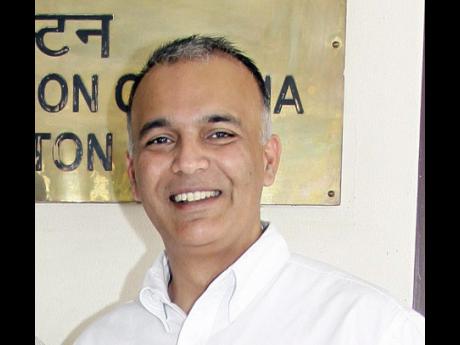A touch of history
"This is fun, a lot of fun," said a group of 10 students in unison as they gathered around a table with artefacts.
What is the fun element, one might ponder. These students from The Salvation Army School for the Blind and Visually Impaired were about to experience a time travel of sorts.
On the table in front of them was a selection of artefacts from different periods of the history of Jamaica - a drum, a horn, an African mask, Taino implements and a jug with spoons. They covered a timeline, and had a different feel to each of them - smooth, light-weight, multi-dimensional.
"Lord have mercy!" exclaimed Toshtica Sang as she picked up a pewter flagon. "This is so heavy. I am going to fall down."
Her colleague, Nicola Anderson, grabbed the pewter flagon, (pewter is an alloy of tin hardened with small amounts of other metals such as copper, lead, zinc, antimony and sometimes silver) as she shared Sang's sentiments.
The students were participating in a new initiative of the Education Department of the National Museum of Jamaica, 'Touch Tours'.
"Touch Tours are primarily a way to acquire information or to access a work of art through touching. Tactile experiences also help to complete mental images of an object," said Stephanie Rose, assistant education officer at the National Museum of Jamaica.
Touch Tours are path-breaking in many ways. They allows the visitor to touch the selected artefacts with bare hands, processing the information of the weight, dimension, surface area, and the shape.
The students from the Salvation Army School for the Blind and Visually Impaired had the time of their lives as they passed around the artefacts, helping each other to run their hands over them, feeling them out, and answering questions posed by Rose, at the same time posing some of their own.
"Miss, but why would they use pewter if there is lead in it, isn't it poisonous?" they asked.
A valid question, which was addressed by the assistant education officer, who explained the choice of materials, which in a bygone era, were not perceived to be hazardous.
From a distance, Theresa Carr, their social sciences and history teacher, observed the interactions.
"This (Touch Tours) is so inclusive," said Carr. "These students always get left out as everywhere they go, there is a 'Please do not touch' policy.
She said that she was particularly thrilled about the possibilities and how more visually impaired students couls learn through such initiatives.
"It is a very normal human thing for people to want to touch objects, and historical artefacts have a smell and a feel that is utterly unique and fascinating," said Jonathan Greenland, director, National Museum Jamaica, Institute of Jamaica.
"Touch Tours are a way for people to directly experience historical artefacts through more of their senses than just sight," he said, adding that they were aware of the wear and tear that would ensue.
"We completely understand that, but a lot of our artefacts would be damaged by repeated touching," Greenland said. "But the Touch Tours will allow for our visually impaired audiences to experience museums in a more satisfying and complete way.
"It is our mission to serve all audiences, not just the abled," he said.
The aim, according to Rose, is to make the collection (of the National Museum of Jamaica) more accessible and to allow them to feel a sense of cultural inclusion.
"Touching the objects will also stimulate their imagination and enhance their metaphorical thinking," she said. "They will be asked questions regarding the objects to compare textures of each object just to encourage dialogue and responses from the audience.
"Tactile experiences also help to complete mental images of an object," Rose added.
Varied audience
She said that the idea of Touch Tours is to engage varied museum audience including the blind, visually impaired, and people with developmental or cognitive disabilities who will benefit from learning and exploring artwork and/or artefacts through touching.
These objects, Rose said, would include replicas of artefacts, textiles, paintings, three dimensional sculptures, ceramics, among others, and initially, would range from the Taino, Spanish, British, and African influences in Jamaica.
Touch Tours, she said, would also be available for other individuals who were not necessarily disabled. The tours will be guided by a professional tour guide with no more than six to 10 people to accommodate proper monitoring of the objects during the tour.
The tour guide will also give verbal descriptions, tell stories, and talk about the significance of each object and how they relate to Jamaica's culture and heritage.
"This is a beginning," Rose said. "We would like that this initiative grows and even finds a permanent space in the museum."
Noble intentions, but she said they need resources and funding to ensure the sustainability of Touch Tours.
The 12- to 17-year-old students of The Salvation Army school were yearning for more. "When can we come back next, miss?" one of them asked. "This is so much fun!"






